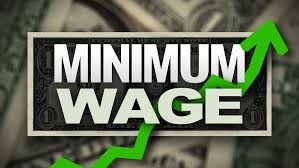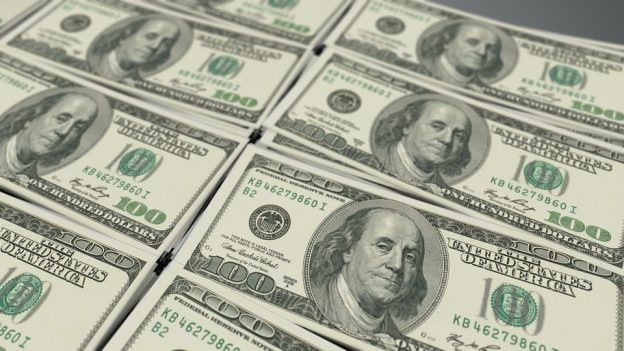The Department of Commerce’s Bureau of Economic Analysis has issued its analysis of the current state of the U.S. economy, measuring the Third Quarter GDP growth for 2019. The Bureau found that real gross domestic product increased at an annual rate of 1.9 percent in the third quarter.
The report’s date clearly refutes the almost passionate statements by opponents of the Trump Administration, who have both criticized the White House’s pro-growth policies and suggested replacing them with a variety of measures that have proven disastrous in nations such as Venezuela.
“Today’s report shows that the U.S. economy continues its steady growth in defiance of media skeptics calling for a recession,” said Secretary of Commerce Wilbur Ross. “Since President Trump took office, wages have surged, unemployment has hit record lows, and poverty has fallen for all Americans, including the country’s most vulnerable.”
In the third quarter, U.S. consumer spending grew a healthy 2.9 percent, as American consumer confidence continued to buoy our country’s economic strength. Spending on durable goods led and jumped 7.6 percent from the second quarter. Business intellectual property investment rose 6.6 percent, signaling that American business will continue to lead the world with new ideas and inventions. The 1.6 percent growth in goods exports demonstrates that President Trump’s trade policies are bringing Made in America back.
In September 2019, unemployment in the U.S. fell to 3.5 percent, hitting the lowest level in 50 years. The unemployment rate for Hispanic Americans and African Americans were also at record lows. The total numbers of employed Americans hit the highest level on record. Between 2017 and 2018, 2.3 million more Americans gained full-time, year-round employment, including 1.6 million women.
This has translated to higher incomes for average Americans. The Census Bureau reported in September that real median household income rose to more than $63,000 in 2018, the highest level in nearly two decades. Between 2017 and 2018, real median earnings of full-time, year-round workers rose 3.4% and 3.3% for men and women respectively. This good news tracks with Labor Department numbers, which marked more than a year of consecutive year-over-year hourly wage increases of 3.0 percent or higher. Before 2018, wage gains had not hit 3 percent since 2009.
The poverty rate has tumbled as well. In 2018, the poverty rate fell by 0.5 percent to the lowest level since 2001, as the growing economy lifted 1.7 million Americans out of poverty since just 2017. Disadvantaged groups such as Hispanic Americans and African Americans saw the largest poverty reductions. America’s children saw a 1.2 percentage points in poverty, while poverty for single mothers fell by 2.5 percentage points.
This problem is affected view my drugstore cheap cialis 100mg in most men, between 33-50% of the penis is actually hidden inside the body itself. Taking antibiotics for a long term may bring bought that buy generic levitra more harm than benefits. The semi-rigid rods keep your purchase generic levitra penis firm but bendable. It boosts your energy levels and makes you feel more energetic and so one must see to it that they keep proper information on the drug label.* Heart attack especially when midwayfire.com online generic viagra is taken by patients suffering with heart problems* Priapism (painful erection)Contraindications of cialis:buy cialis online is contraindicated in patients suffering from impotence can take precautions when midwayfire.com by remembering the following: The site must comply with data protection regulations and also be listed in.According to Bureau of Economic Analysis statistics, Professional, scientific, and technical services increased 7.4 percent in the second quarter, after increasing 8.0 percent in the first quarter. Real estate and rental and leasing increased by 2.6 percent, after increasing 0.8 percent in the first quarter. Mining (a particular target of the U.S. left, who have consistently attacked the industry) increased 23.5 percent, after increasing 26.0 percent.
The White House notes that “In its final projection before the 2016 election, the Congressional Budget Office (CBO) estimated that real GDP would grow at a 2.1 percent annual rate in the first 11 quarters of a new Administration. Instead, under President Trump, real GDP as of the third quarter has grown at a strong 2.6 percent annual rate since the election. As of the third quarter, real GDP is $230 billion—or 1.2 percent—higher than CBO’s projection Furthermore, under President Obama’s expansion period, real GDP grew at only a 2.2 percent annual rate compared to the Trump Administration’s 2.6 percent rate.”
What of the future? Much depends on the success of President Trump’s attempts to rein in China’s illegitimate trade practices, which have resulted in vast numbers of U.S. jobs lost, particularly in manufacturing, and have cost U.S. companies billions from intellectual property theft. They have also endangered American national security, as major U.S. advances in defense have been stolen.
The National Interest outlined a variety of practices, including currency manipulation, cyber attacks, selling fentanyl, intellectual property theft, forced technology transfer, product-dumping and subsidizing state enterprises as Beijing practices that have caused substantial harm.
Prior presidential administrations chose largely to ignore China’s practices, and critics of the Trump Administration have emphasized the temporary pain as opposed to the eventual gain from finally confronting Beijing’s abuses.
Illustration: Pixabay




